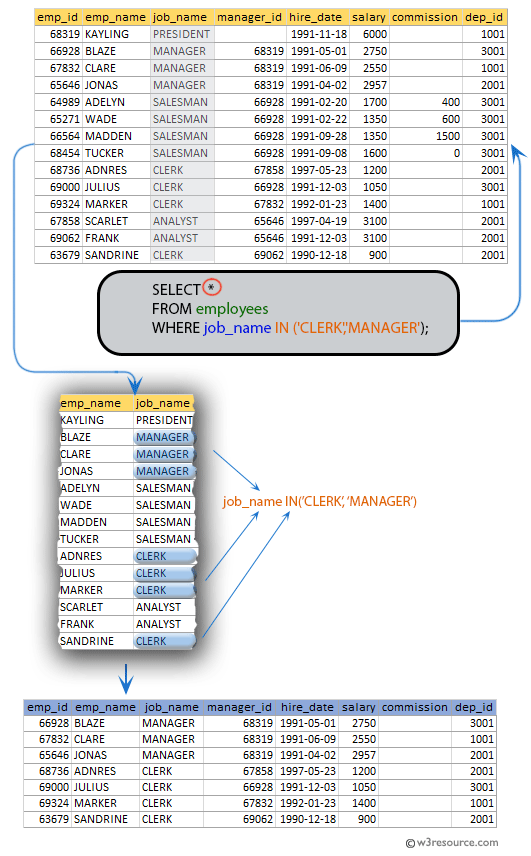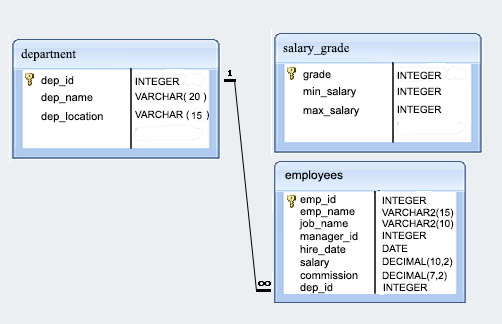SQL Exercise: List the employees who are either CLERK or MANAGER
[An editor is available at the bottom of the page to write and execute the scripts.]
40. From the following table, write a SQL query to find those employees who are either CLERK or MANAGER. Return complete information about the employees.
Sample table: employees
Pictorial Presentation:

Sample Solution:
SELECT *
FROM employees
WHERE job_name IN ('CLERK','MANAGER');
Sample Output:
emp_id | emp_name | job_name | manager_id | hire_date | salary | commission | dep_id --------+----------+----------+------------+------------+---------+------------+-------- 66928 | BLAZE | MANAGER | 68319 | 1991-05-01 | 2750.00 | | 3001 67832 | CLARE | MANAGER | 68319 | 1991-06-09 | 2550.00 | | 1001 65646 | JONAS | MANAGER | 68319 | 1991-04-02 | 2957.00 | | 2001 63679 | SANDRINE | CLERK | 69062 | 1990-12-18 | 900.00 | | 2001 68736 | ADNRES | CLERK | 67858 | 1997-05-23 | 1200.00 | | 2001 69000 | JULIUS | CLERK | 66928 | 1991-12-03 | 1050.00 | | 3001 69324 | MARKER | CLERK | 67832 | 1992-01-23 | 1400.00 | | 1001 (7 rows)
Explanation:
The said query in SQL that retrieves all columns from the 'employees' table.
The WHERE clause includes rows that the "job_name" column must be equal to either 'CLERK' or 'MANAGER'.
Relational Algebra Expression:

Relational Algebra Tree:

Go to:
PREV : List ID, name, salary, and job_name of the employees.
NEXT : All employees except those who joined in February.
Practice Online
Sample Database: employee

Have another way to solve this solution? Contribute your code (and comments) through Disqus.
What is the difficulty level of this exercise?
Test your Programming skills with w3resource's quiz.
